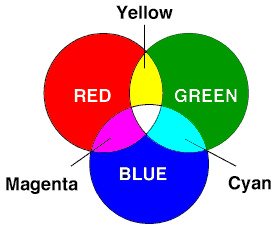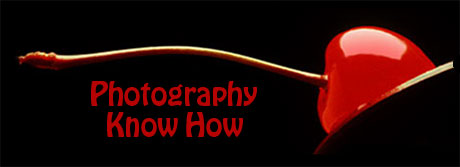The white balance feature on digital cameras is designed to correct for different kinds of light, such as sunlight, shade, indoor light, etc.
Each of these types of light have different variations of color temperature and the camera must correct for this.
Color Temperature is a measurement of the color of light. Even though our eyes see pretty much the same colors in most of the common kinds of light…such as daylight, indoor light, florescent light…these light sources are in fact quite different.
In digital photography correcting these variations in color that come from different light sources is a function of the ‘white balance’ feature all digital cameras have. We’ll get to that in a moment.
You have probably noticed the effects of color temperature yourself, maybe even without realizing it.
Have you ever looked in a mirror and thought that your face looked somewhat pale and sickly? But then in another mirror your skin looks healthy and robust. The difference is often the type of light used.
Primary and Secondary Colors of Light

Natural or ‘white light’ consists of 3 primary colors… in the visable spectrum these are red, green and blue. All the millions of colors that we see come from various mixtures of these primary colors.
True ‘white light’ would be an equal balance of red, green and blue light. What are known as the complementary, or secondary colors of light are cyan, magenta and yellow.
These secondary colors are produced by equal amounts of 2 primary colors and the absence of the 3rd primary color. So, eliminate red and you have green and blue or cyan. Red and blue, with no green produces magenta and red and green with no blue produces yellow.
In film photography, it is important to understand the make-up of light in order to choose the correct film or the correct color filter needed to make sure that the colors in a photograph are properly rendered. Even in black and white film photography this can be important.
Today with digital cameras, it is still somewhat important, though the automatic white balance setting on most cameras does much of the understanding for us.
But it is still a good idea to have a basic knowledge of the color temperature of the most common light sources, especially if color rendition is important to your photo. Sometimes a simple adjustment to the white balance setting can make a significant difference in your results.
Outdoor Light or Daylight
The color temperature of light is measured in degrees using a scale called Kelvin named after it’s founder. Professional photographers know that daylight is about 5500 degrees Kelvin, or 5500K. Electronic flash is usually designed to be similiar to daylight, and using daylight film with flash photography generally produces acceptable color.
Open shade tends to be more blue in color than sunlight, thus an adjustment is needed to keep your pictures from having a bluish cast.
When the sun is low in the sky…around sunrise or sunset…the color of daylight is more red and yellow than it is in midday, and colors photographed at these times will have a warmer tone to them.
Sometimes this is what is wanted and no correction is necessary, but if accurate color is important then an adjustment would be required. This could be a filter, changing the white balance setting or correcting the image later in the darkroom.
Indoor Light or Tungsten Light
Indoor light comes in a variety of color temperatures as well. A normal light bulb is about 2800K, which is very orange. Set your digital camera’s white balance for daylight and shoot someone lit by a household lamp…they will look quite reddish/brown. Instant suntan!
Indoor film, or tungsten as it is known professionally, is balanced for 3200K or 3400K, and tungsten bulbs are available to match those temperatures. Image sensors on digital cameras will have an indoor light setting, sometimes labeled tungsten or incandescent.
The Florescent Tube
Then we come to florescent light. This kind of light was always a nightmare to the professional film photographer. First of all, there are different colors of florescent lights…everything from warm tones to daylight simulated florescent for growing plants.
And, due to the nature of the florescent light itself, film often reacted in strange, sometimes unexpected ways. A very undesirable greenish cast was very common, and extremely difficult to correct for.
Digital cameras sometimes have 2 or more settings for florescent light, one balanced for warm florescent and another for cool florescent. If you want to do a lot of photography with florescent lights, it is best to experiment with different settings so you will know what to expect.
Luckily with digital, you can see your results immediately and make adjustments as needed.
Chart Of Color Temperatures
The chart below gives the general color temperatures of some common light sources. The higher the degrees Kelvin, the more blue (or cooler) the light will be.
These are only general and the actual color temperatures can vary widely, but for practical purposes these ranges will will give you a good guide to go by:
|
|
From Outdoor Blues to the Warm Indoors
While you may not want to remember all these different color temperatures in their Kelvin measurements, do keep in mind that shade is higher in blue than daylight, daylight is redder or warmer in early morning and early evening, and indoor light is very warm (reddish/orange) compared to outdoor light. And florescent is best learned by experimenting.
If the auto white balance setting on your camera doesn’t seem to be giving you the colors you expected, then knowing these general guides for different types of light may help you adjust the white balance manually to correct the problem.
And keep in mind that large areas of color nearby may be reflecting that color onto your subject and you will get a color cast even though the white balance setting is correct. But these are the things that make photography fun and challenging!




My camera sensors don’t expose purple (at all). It comes out as blue. By using custom white balance setting, the purple actually comes out as purple!
WONDERFUL Post.thanks for share..extra wait .. …